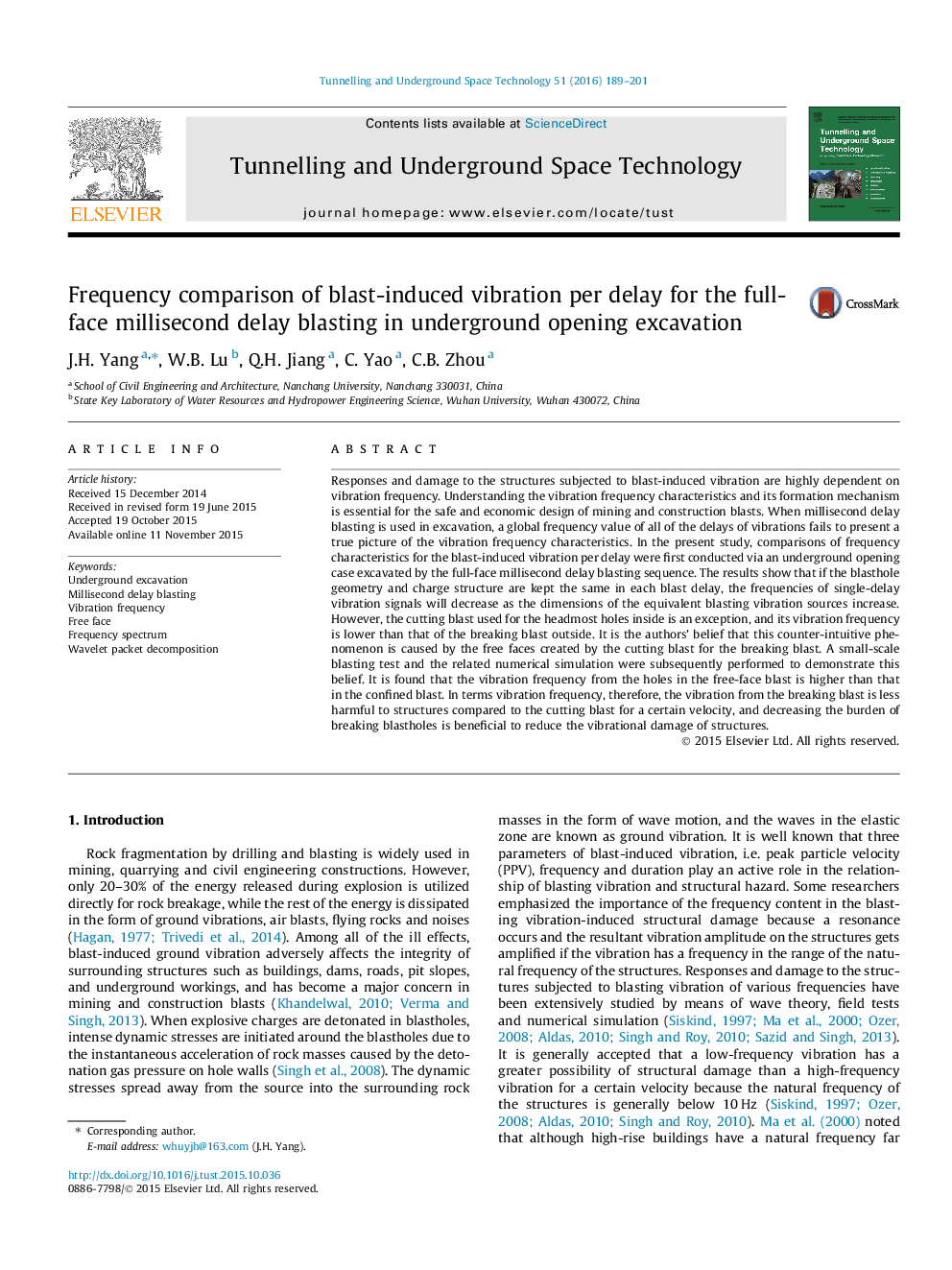| کد مقاله | کد نشریه | سال انتشار | مقاله انگلیسی | نسخه تمام متن |
|---|---|---|---|---|
| 311737 | 534125 | 2016 | 13 صفحه PDF | دانلود رایگان |
• Frequencies of single-vibration signals for millisecond delay blasts are compared.
• Frequencies decrease as the sizes of the equivalent blasting vibration sources increase.
• Vibration frequencies of breaking blasts are higher due to blast-created free faces.
• Vibration of breaking blasts is less harmful than that of cutting blasts for a certain PPV.
Responses and damage to the structures subjected to blast-induced vibration are highly dependent on vibration frequency. Understanding the vibration frequency characteristics and its formation mechanism is essential for the safe and economic design of mining and construction blasts. When millisecond delay blasting is used in excavation, a global frequency value of all of the delays of vibrations fails to present a true picture of the vibration frequency characteristics. In the present study, comparisons of frequency characteristics for the blast-induced vibration per delay were first conducted via an underground opening case excavated by the full-face millisecond delay blasting sequence. The results show that if the blasthole geometry and charge structure are kept the same in each blast delay, the frequencies of single-delay vibration signals will decrease as the dimensions of the equivalent blasting vibration sources increase. However, the cutting blast used for the headmost holes inside is an exception, and its vibration frequency is lower than that of the breaking blast outside. It is the authors’ belief that this counter-intuitive phenomenon is caused by the free faces created by the cutting blast for the breaking blast. A small-scale blasting test and the related numerical simulation were subsequently performed to demonstrate this belief. It is found that the vibration frequency from the holes in the free-face blast is higher than that in the confined blast. In terms vibration frequency, therefore, the vibration from the breaking blast is less harmful to structures compared to the cutting blast for a certain velocity, and decreasing the burden of breaking blastholes is beneficial to reduce the vibrational damage of structures.
Figure optionsDownload as PowerPoint slide
Journal: Tunnelling and Underground Space Technology - Volume 51, January 2016, Pages 189–201
